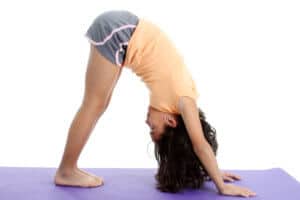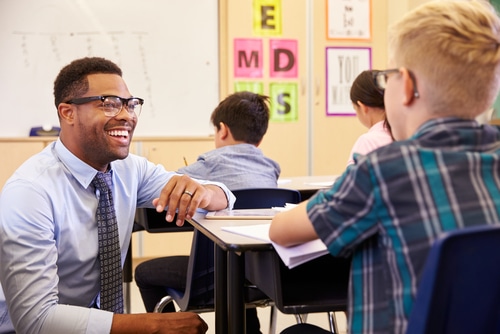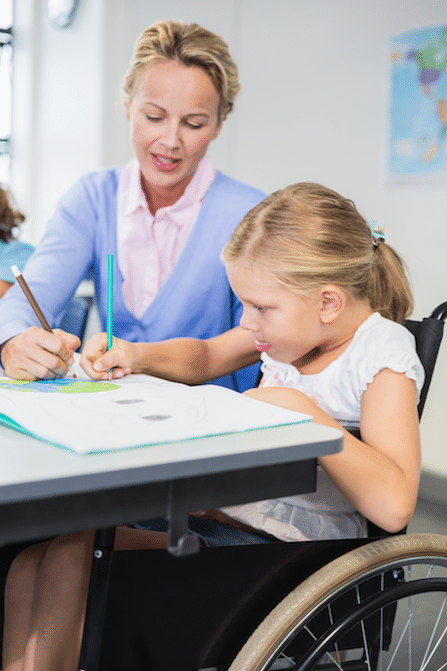Yoga is a great way to incorporate both movement and calm into your classroom. Since yoga improves self-regulation, it can even have positive effects on students’ behavior. Here are a few ideas for making classroom yoga a part of your daily routine.
Benefits of Classroom Yoga
First, why should you bother? Research shows that yoga benefits children’s (and adult’s) abilities to regulate stress and emotions, boost mind-body awareness (including concentration and attention), and improves physical fitness (like strength and balance). In the classroom, this emotional regulation can make a huge difference in building a positive classroom environment! Even if you were to start by practicing yourself, focusing on your own emotional regulation and stress management will benefit your students. You may find that you’re more likely to be a more responsive caregiver. 🙂
Classroom Yoga in Practice
I am a yoga instructor as well as a teacher, so I have seen this done in a lot of different ways! For many young children, you can create “yoga dice” or decks of cards. Each dice side or card has a different pose. Have kids take turns rolling the dice or choosing a card, then the class does the pose together. Often the poses emphasized are easier and the names are changed to be fun, child-friendly alternatives, like “monkey” instead of “tree pose” or “snake” instead of “cobra pose.” You can make your own dice or purchase decks of yoga cards. Older kids may be able to do a short “flow,” such as a Sun Salutation.
As far as logistics go, I prefer to start the day with classroom yoga so it gets the day off on the right foot. You don’t need long; only 15 or so minutes (depending on the age of your students) is enough to make a difference. While mats are nice to have, you really just need a clear space for each child. They could even stand beside their desks if that’s where you have room!
For any age group, do build in some time to focus on breathing. Have kids calm their bodies and take some conscious breaths. There are different types and you can call them by fun names, too (click through for a video). Building a mindfulness practice is one of the best tools to combat stress. Teaching mindfulness skills (like breathing and yoga) to children builds resilience!
Worried About Adding Classroom Yoga to Your Daily Routine?
You may be concerned that you don’t have enough time in your day for classroom yoga. Consider that over time, you might “make up” the time spent doing yoga by having a classroom with fewer behavioral challenges. Think of it as an “investment” in the classroom environment.
Perhaps you’re worried about principal approval. For skeptical principals, explaining the benefits of yoga to a child’s emotional, social, cognitive, and physical development will help. Many schools place an emphasis on educating the “whole child,” and classroom yoga definitely qualifies! Invite him or her to come observe (or participate!) in a classroom yoga session one morning, so they can see what it’s all about. I bet once you and your principal see the changes classroom yoga makes in your students, you’ll be all about some Down Dog!





